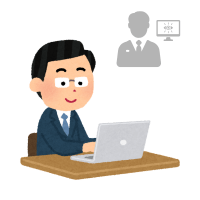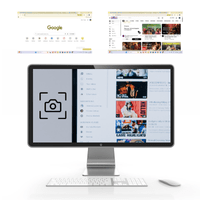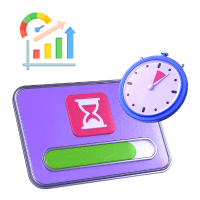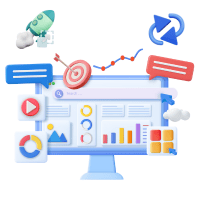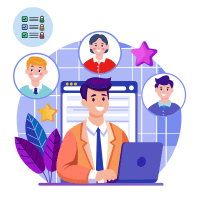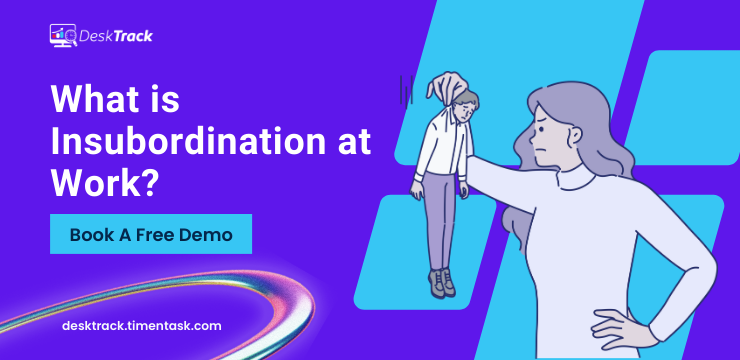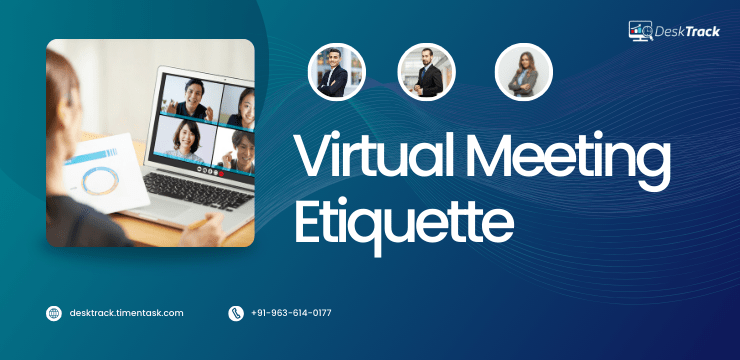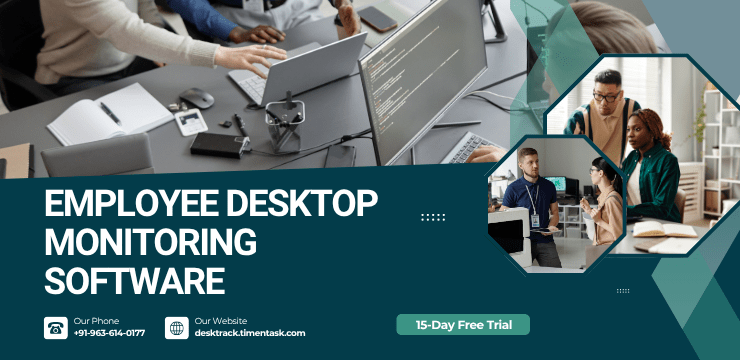
In the ever-evolving digital workplace, tracking productivity and ensuring data security are more critical than ever. Employee desktop monitoring software has emerged as a key solution for businesses aiming to manage remote or in-office teams effectively. Whether you’re a startup scaling operations or an enterprise handling sensitive information, choosing the right tool can make a significant difference in performance, compliance, and transparency.
With a growing number of tools in the market, finding software that aligns with your organization’s goals can be overwhelming. From real-time activity tracking to compliance support, each platform offers a unique blend of features. But which one truly delivers?
This comprehensive guide will walk you through everything you need to know about employee desktop monitoring—what it is, why it matters, what features to look for, and how to choose the best solution for your team. We’ll also explore the top tools in the market, with DeskTrack leading the way as the top recommendation for 2025.
Let’s get started with understanding the core value these tools bring to modern workplaces.
What Is Employee Desktop Monitoring Software?
Desktop monitoring software allows employers to oversee and analyze how employees use their work computers. This provides visibility into workflow efficiency, application usage, and productivity trends.
Why It’s Becoming Essential in Modern Workplaces
With hybrid and remote work becoming the norm, businesses face challenges like reduced visibility, data leakage, and decreased productivity Monitoring tools help tackle these issues effectively.
Key Reasons for Growing Adoption:
- Increases accountability in remote teams
- Helps identify workflow inefficiencies
- Prevents data misuse or security breaches
- Aids in performance reviews
- Supports compliance with industry regulations
Read Also: Is Employee Monitoring Software an Invasion of Privacy? Debunking Myths
Key Benefits of Employee Desktop Monitoring Software
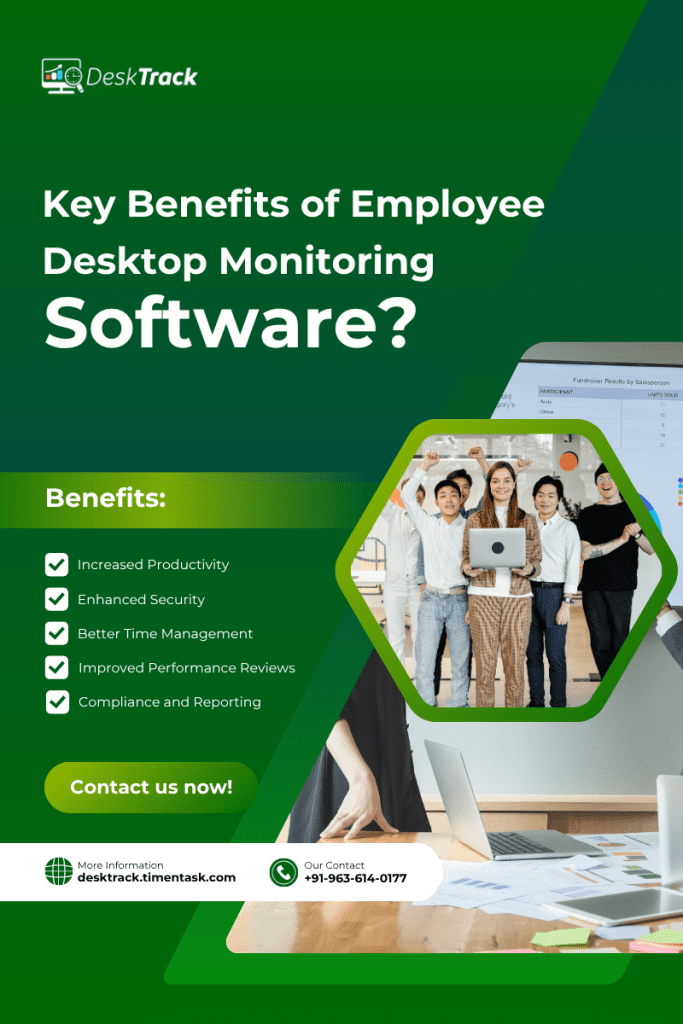
Before investing in a monitoring tool, it’s crucial to understand the benefits it offers. These tools go far beyond basic surveillance—they help build a productive and secure digital environment.
1. Increased Productivity
- Tracks time spent on productive vs. non-productive apps
- Identifies time-wasting patterns
- Encourages focused work habits
2. Enhanced Security
- Alerts on unauthorized file transfers
- Monitors access to sensitive data
- Reduces internal threats and data leaks
3. Better Time Management
- Allows project-based time tracking
- Helps managers allocate tasks efficiently
- Supports employee self-management
4. Improved Performance Reviews
- Data-backed performance reports
- Objective analysis of work habits
- Encourages continuous feedback
5. Compliance and Reporting
- Maintains logs for legal audits
- Supports GDPR, HIPAA, and other standards
- Provides timestamped records for accountability
Core Features to Look For in Employee Desktop Monitoring Software
Not all monitoring tools are created equal. Knowing what to look for ensures you select software that aligns with your team’s workflow and goals.
1. Real-Time Activity Monitoring
- Live screen view of active employees
- Instant updates on task status
- Visual productivity dashboards
2. Screenshot Capture
- Periodic or triggered screenshots
- Visual record of user activity
- Useful for security and training
3. App and Website Usage Tracking
- Records the time spent on different apps
- Flags unproductive websites
- Offers insights into tech stack efficiency
4. Keystroke Logging (Ethically Applied)
- Tracks typed data for auditing (optional)
- Useful for investigating security incidents
- Must be used with transparency and consent
5. Data Export and Reporting
- Customizable performance reports
- Export options (PDF, Excel, etc.)
- Integration with HR and project tools
On-Premise vs. Cloud-Based Solutions of Employee Desktop Monitoring Software
The deployment model affects security, accessibility, and scalability. Understanding the difference helps businesses make the right choice.
1. On-Premise Monitoring Tools
- Installed on local servers
- More control over data
- Higher initial costs
2. Cloud-Based Monitoring Tools
- Accessed via web browsers
- Lower setup costs
- Scalable and easy to manage
3. Pros and Cons of Each
- On-premise: Better control, but less flexible
- Cloud: More scalable, but reliant on the internet
4. Which One Is Right for You?
- Choose the cloud if you have a remote team
- Go on-premise for high-security environments
- Hybrid options are also available
5. Integration and Customization
- Check for APIs and plugin support
- Look for easy integration with existing tools
- Customize dashboards to suit your team
Legal and Ethical Considerations of Employee Desktop Monitoring Software
Make your workday more productive
Time tracking and work management can help you reach your goals
faster.
Monitoring software must be used responsibly. Clear policies and legal compliance are essential to maintain trust and transparency.
1. Employee Consent and Notification
- Inform employees before deployment
- Include policies in onboarding documentation
- Use pop-ups or digital signatures for consent
2. Privacy and Data Protection
- Avoid collecting personal information
- Anonymize sensitive data
- Follow industry-specific privacy guidelines
3. Transparent Usage Policies
- Share monitoring intentions openly
- Focus on productivity, not surveillance
- Conduct regular policy reviews
4. Compliance with Local Laws
- Ensure compliance with GDPR, HIPAA, etc.
- Research local labor laws before implementation
- Maintain audit logs for legal defense
5. Ethical Use of Monitoring Tools
- Respect work-life boundaries
- Monitor during official hours only
- Involve HR in monitoring decisions
How to Evaluate and Compare Tools of Employee Desktop Monitoring Software
Choosing the right tool involves research, testing, and comparison. Here’s what to consider while shortlisting vendors.
1. User Interface and Ease of Use
- Intuitive dashboards
- Minimal training required
- Real-time data visualization
2. Scalability and Integration
- Suitable for growing teams
- Integrates with Slack, Trello, Jira, etc.
- Multi-platform support (Windows, Mac, Linux)
3. Customer Support and Reliability
- 24/7 support channels
- Detailed documentation and help center
- Regular updates and maintenance
4. Pricing and Licensing Options
- Subscription-based vs. one-time purchase
- Tiered plans for different team sizes
- Transparent cost structure
5. Trial Period and Demo Access
- Look for free trials or demo accounts
- Test real-time monitoring and reporting
- Involve team leads in the trial phase
Top 5 Employee Desktop Monitoring Software (2025 Picks)
Here are the top-rated tools you should consider in 2025, based on features, user experience, and scalability.
1. DeskTrack
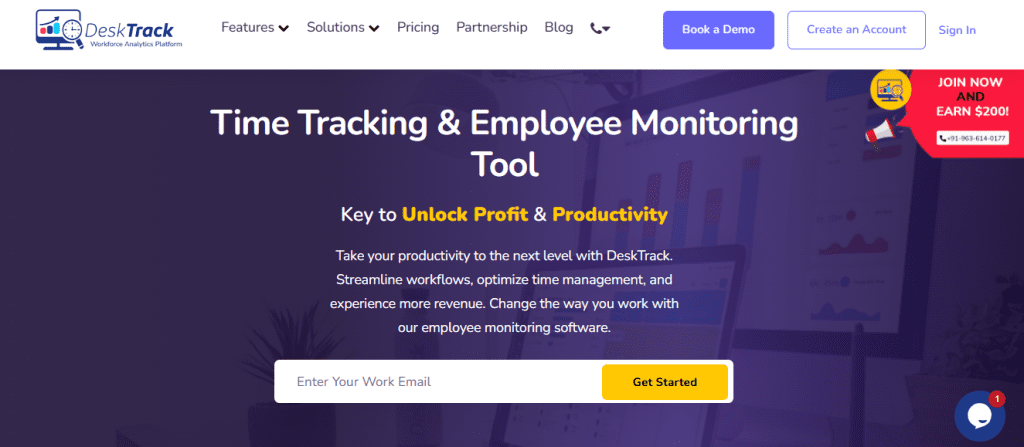
DeskTrack is an advanced employee desktop monitoring software designed for productivity, transparency, and security. It provides real-time activity tracking, automated screenshots, app/website usage logs, idle time analysis, and project-wise time tracking. Its intuitive dashboard makes it easy for managers to view reports, while strong privacy and compliance controls ensure ethical monitoring. DeskTrack is cloud-based, scalable, and offers both on-premise and mobile versions—making it ideal for small businesses, large enterprises, and remote teams alike.
Key Highlights:
- Real-time productivity monitoring
- Project and task time tracking
- Screenshots, keystrokes, and app usage logs
- Affordable pricing and flexible deployment
- Real-time tracking, screenshot capture, and productivity insights
- Affordable, scalable, and user-friendly
2. Teramind
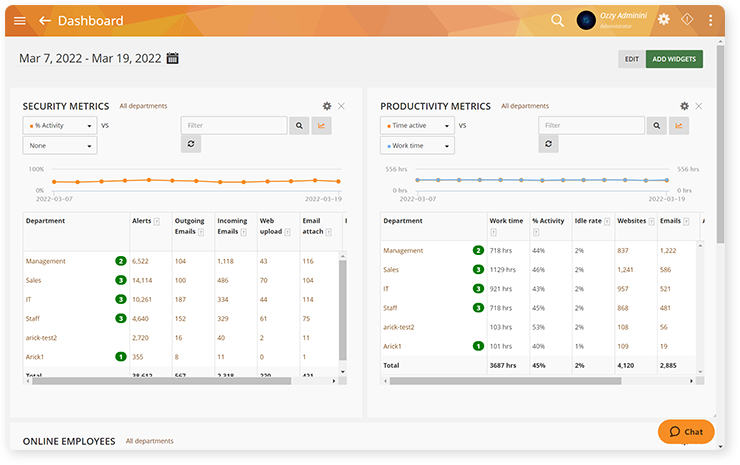
Teramind is a feature-rich monitoring solution focused on security and behavior analytics. It’s best suited for enterprises that handle sensitive data and need strong internal threat detection. Teramind offers video capture, OCR-based content tracking, and risk-based automation. It’s ideal for industries like finance, legal, and healthcare.
Key Highlights:
- Insider threat detection
- Automated policy enforcement
- Real-time alerts and anomaly detection
- On-premise and cloud options
- Advanced behavioral analytics
- Strong security and compliance features
- Behavioral analytics
- Best for regulated industries
3. ActivTrak
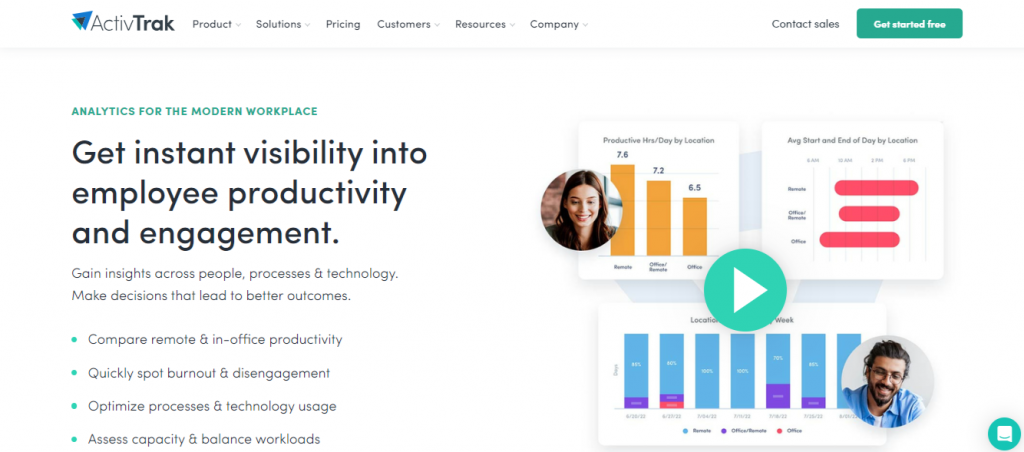
ActivTrak provides powerful insights into user behavior and productivity trends. Unlike tools focused solely on surveillance, it emphasizes coaching and improvement. Its visual dashboards help managers understand how time is spent, while offering privacy-forward monitoring by excluding personal data by default.
Key Highlights:
- Productivity heatmaps and behavior reports
- Focused on performance coaching
- Minimal invasive tracking
- Great for SMBs and hybrid teams
- Cloud-based with strong data encryption
- Focuses on productivity analytics
- Intuitive interface
- Good for mid-sized teams
4. Hubstaff

Hubstaff is a time-tracking and monitoring tool best suited for freelancers, remote teams, and field-based employees. It includes GPS tracking, online timesheets, and activity levels. While it’s not as comprehensive in surveillance, it’s perfect for tracking hours and billable time accurately.
Key Highlights:
- Time tracking with GPS monitoring
- Payroll integration and invoicing
- Screenshots and activity levels
- Mobile apps for Android and iOS
- Lightweight and user-friendly
- Time tracking with GPS support
- Ideal for remote teams and freelancers
- Mobile-friendly
5. Insightful
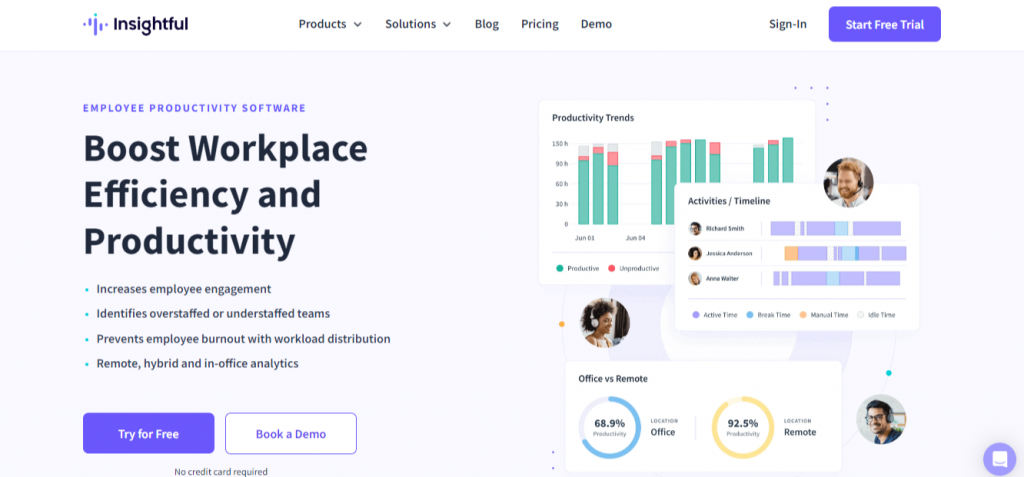
Workpuls, now known as Insightful, is an easy-to-use employee monitoring and time tracking software with a clean interface. It focuses on real-time productivity analysis and project-based tracking. It’s great for businesses looking for straightforward, scalable solutions without the complexity of enterprise tools.
Key Highlights:
- Real-time employee monitoring
- Project and task tracking
- Automatic time mapping
- Activity categorization (productive vs. idle)
- Easy deployment and low maintenance
- Simple and clean UI
- Good for both time tracking and behavior analysis
- Fast setup and deployment
Implementation Best Practices of Employee Desktop Monitoring Software
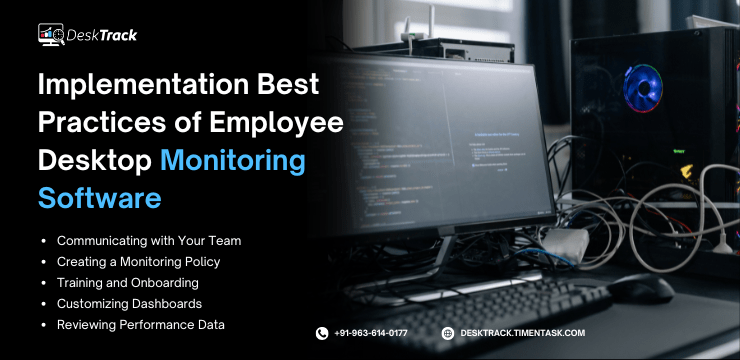
Successfully rolling out desktop monitoring software involves more than just installation.
1. Communicating with Your Team
- Be transparent about monitoring goals
- Share the benefits with employees
- Encourage open discussions
2. Creating a Monitoring Policy
- Define what will be monitored
- Include it in your employee handbook
- Review it annually
3. Training and Onboarding
- Train managers and employees
- Offer support resources
- Walk through dashboards and reports
4. Customizing Dashboards
- Tailor views by department or role
- Highlight key performance indicators (KPIs)
- Use filters and tagging features
5. Reviewing Performance Data
- Conduct monthly reports
- Share feedback constructively
- Adjust goals based on findings
Read Also: Project Management vs Time Tracking: Which One Do You Need in 2025?
Common Mistakes to Avoid with Employee Desktop Monitoring Software

Even the best software can fail if misused. Avoid these pitfalls to ensure a successful rollout.
1. Over-Monitoring
- Avoid micromanaging
- Respect employee autonomy
- Focus on output, not clicks
2. Ignoring Employee Feedback
- Conduct anonymous surveys
- Act on constructive criticism
- Update policies if needed
3. Choosing Features You Don’t Need
- Avoid feature overload
- Prioritize essentials for your team
- Upgrade as needs evolve
4. Not Setting Clear Objectives
- Define goals before implementation
- Track productivity, not surveillance
- Align KPIs with business targets
5. Lack of Legal Preparation
- Consult legal experts
- Align software with jurisdictional laws
- Maintain clear documentation
Why DeskTrack Is the Best Choice for Your Business
After comparing the leading tools, DeskTrack stands out as the most balanced and business-ready solution for 2025. It combines powerful features, affordability, and ease of use—making it ideal for startups, growing companies, and large enterprises alike.
With real-time tracking, detailed productivity insights, and compliance with global standards, DeskTrack not only helps you monitor your team—it empowers them to perform better. Whether you’re managing in-office employees or distributed remote teams, DeskTrack gives you complete visibility and control.
Choose DeskTrack for:
- Transparent and ethical monitoring
- Fully customizable reports
- Time and productivity optimization
- Cloud or on-premise deployment
- Scalable pricing for any team size
Conclusion
Choosing the right employee desktop monitoring software is a strategic decision that can enhance productivity, data security, and team performance. By understanding your team’s needs, focusing on essential features, and maintaining ethical practices, you can implement a tool that supports growth and accountability.
Among the top choices available today, DeskTrack stands out as the most reliable, feature-rich, and user-friendly monitoring solution for businesses of all sizes. With real-time insights, intuitive dashboards, and strong compliance standards, DeskTrack empowers companies to monitor efficiently—without compromising trust.
Invest wisely, implement carefully, and watch your team thrive with the right monitoring tools.
Frequently Asked Questions (FAQ)
Q. Is employee desktop monitoring software legal?
Yes, it is legal in most regions, provided employees are informed and consent is obtained. Always follow local labor laws and data protection regulations like GDPR or HIPAA.
Q. Can remote employees be monitored effectively?
Absolutely. Most desktop monitoring tools like DeskTrack offer cloud-based solutions that allow real-time tracking, time logging, and activity monitoring for remote teams.
Q. What type of data does monitoring software collect?
Typically, it collects data like:
- App and website usage
- Time spent on tasks
- Screenshots and keystrokes (if enabled)
- Idle vs. active time
- File transfers or USB access
Q. Will employees feel micromanaged?
That depends on how the tool is implemented. Transparency, clear communication, and focusing on productivity (not surveillance) help build trust.
Q. Why is DeskTrack recommended over others?
DeskTrack offers a balanced mix of features, ease of use, and affordability. It supports real-time tracking, compliance, and detailed reporting—making it ideal for both remote and on-site teams.



